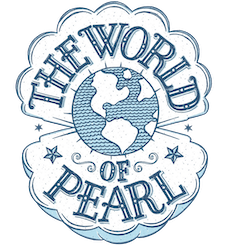Why don’t all bivalve mollusks produce pearls? Bivalves use the same material they use to make their shell to make a pearl. If they can make a shell, why not make a pearl?

One of my favorite stories is the one about the Tennessee River pearl diver Kenneth. Now, in Tennessee, divers dive for mussel shells and pearls are the lucky “by-product” of all of their diving. Well, Kenneth has been diving consistently for the past year and a half. After eighteen months of diving, he has found exactly 1 mussel and it has in it 3 pearls. That is a whole lot of work for not very many pearls! Why hasn’t he found more pearls in the past year and a half?
Or, better yet, why don’t all bivalve mollusks produce pearls? The answer? Because they do not have to.
A bivalve mollusk usually does one of a few things to live, it burrows into the sand or mud at the bottom of a river, lake or ocean or it attaches itself to a rock or another hard surface. For its livelihood, it filters water through its gills. It absorbs the nutrients (plankton and other microscopic organisms) for food and it expels the water back out. At times, in all of its filter feeding, it may suck in a foreign substance including mud, bacteria, other organism or more. Sometimes predators will even burrow into their hard shell bodies and settle in the mollusks soft tissue.

So, what happens next, does the mollusk produce a pearl? No! First things first, that mollusks wants to get the foreign substance out. He will do anything he can to expel the foreign invader. Next, sometimes, it just cannot handle it. If the invasive organism causes too much trauma, the mollusk will die. If the mollusk survives, he will typically use calcium carbonate, the same material he uses to make his shell, to coat the foreign substance. And this is what produces a pearl.
Now, here is the crazy thing… sometimes a bivalve mollusk does make a pearl but he is able to release the pearl out of his body before anyone finds it. So, even though he produced a pearl, it gets lost in the ocean or river bottom.
When you look at statistics, only about one in every thousand pearl-producing bivalve mollusk actually produce a pearl. This is why we have cultured pearls! It requires human intervention to start that process.Of course, with the dawning of the cultured pearls, fewer people are out looking for natural pearls. Therefore the chances of finding a natural pearl is even more difficult than ever.
So, all bivalve mussels do not produce pearls either because they do not need to, they do not have to or they are wounded or killed and unable to. We would probably love for all bivalve mollusks to produce pearls but, the truth is, they just don’t!
I am a modern day treasure hunter who travels the world for gorgeous pearls and amazing adventures. I own a pearl jewelry and jewelry repair business, ThePearlGirls.com, with a cute retail store in Athens, GA. I also have a Pearl Travel business and travel blog at TheWorldofPearl.com.




